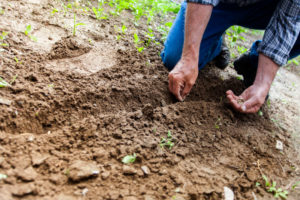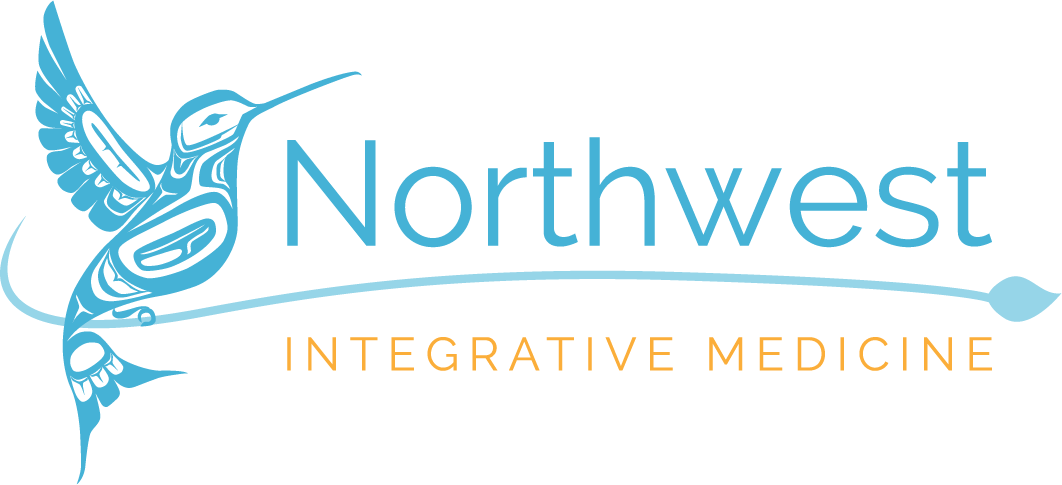 Did you know you can have a virtual first aid kit growing in your own back yard? Certain plants have been used for hundreds of years to help heal ailments from fevers, cuts, burns and belly aches. Here’s a list of my top 10 medicinal plants to keep you feeling your best this summer and get you out into the garden and sunshine as well.
Did you know you can have a virtual first aid kit growing in your own back yard? Certain plants have been used for hundreds of years to help heal ailments from fevers, cuts, burns and belly aches. Here’s a list of my top 10 medicinal plants to keep you feeling your best this summer and get you out into the garden and sunshine as well.
1) Aloe
Well known for the summer sunburns, growing an aloe plant takes minimal effort. Aloe plants are succulents, which typically grow in the desert and need only occasional watering, pruning and protection from frost. Inside the tender aloe leaves lies the gel, which can easily be scraped and applied directly to the skin to help soothe any type of burn, especially sunburn! The gel is even edible and can be used to help sooth stomach or intestinal ulcers and heartburn. Just be careful not to collect the yellowish “latex” of the leaf. If this is ingested it can cause diarrhea. You can learn how to collect the gel here: https://www.thepracticalherbalist.com/holistic-medicine-how-to/how-to-harvest-fresh-aloe-vera-gel/
2) Calendula
Also known as the “Pot Marigold”, calendula is a dazzling skin and small wound healer, also known as a “vulnerary” herb. It’s easy to grow, creates beautiful flowers and easy to harvest. My favorite way to use calendula is as an oil infusion, which I then create a healing salve or ointment with. You can use this salve on any small cut or wound and it will help prevent infection and speed healing. Here is a great recipe to try at home: https://joybileefarm.com/calendula-flowers/
3) Dandelion
Most everyone knows the familiar look of this golden yellow weed which sprouts in the most unexpected places. Dandelion is a bitter herb which has two very different actions. The root of the plant is a choleretic and cholagogue, meaning it helps the liver and gallbladder in the normal flow of bile, which can be detoxifying and help reduce liver congestion. It also helps stimulate appetite and has a mild laxative effect (which can also be detoxifying!). The leaf is more of a diuretic, helping improve urinary flow through the kidneys and reduce edema. Leaves can be eaten fresh, cooked or dried and brewed as tea. Roots are best used fresh to make a tincture or dried to make a tea. Be careful not to harvest this plant near roadways or high traffic areas as they are commonly sprayed with pesticide. Read how to harvest and prepare your dandelion here: http://wildfoodsandmedicines.com/dandelion/
4) Garlic
If you need a plant that is antibacterial, can stimulate the immune system, reduce blood pressure, cholesterol and is delicious – Garlic is your guy! Easy to grow and easy to roast, garlic bulbs and cloves compliment any dish and can even be eaten alone. Although best eaten raw, the strong taste and odor make this difficult, so I typically recommend roasting it or making a tincture. It can also be added to homemade cough syrups and ointments! Here are a few recipes: http://www.gardensablaze.com/HerbGarlicMed.htm
5) Lavender
Blooming all summer long is the beautiful and fragrant lavender. Commonly found as an essential oil, lavender is easy to grow, harvest and dry for teas or even use the dried flowers in sachets for quick stress relief and relaxation. Lavender is a digestive calming, anxiety reducing nervine, helping to nourish the nervous system. Easiest ways to use your homegrown lavender include teas, bath soaks or even in your cooking! There are tons of recipes available online but here are a few including a lavender shortbread: http://preparednessmama.com/harvesting-lavender/
6) Lemon Balm
Also called Melissa officinalis, lemon balm is well known to the culinary world. But did you know it is antiviral, helps reduce depression, and can even help calm an overactive nervous system and thyroid? Lemon balm is best prepared dried and used as a tea or as a fresh tincture. The fresh tea is fabulous for cold sores, both topically and internally! Be sure to talk with your doctor before using Lemon balm if you have a thyroid disorder or think you may have hypothyroidism: https://thenerdyfarmwife.com/12-things-to-do-with-lemon-balm/
7) Peppermint
Be sure to plant this one in a pot, as it can be invasive to your garden or yard! The peppermint plant can be taken internally to help reduce gas pains and topically to reduce pain from tension headaches. It’s easily grown and dried, smells delightful and is even tasty. A cooling cup of peppermint, hot or iced, is a great addition to your summer evenings! https://joybileefarm.com/peppermint/
8) Plantain
Plantain weed is a skin soother and healer and works well in conjunction with calendula flowers. It also is helpful for the lungs and is even a mild expectorant if you have a phlegmy cough. Plantain leaves can be used straight from the garden as a bandage, made into homemade salves for wounds and bug bites, or taken internally as a tea or tincture for lung health. https://joybileefarm.com/peppermint/
9) Rosemary
Not just an herb for cooking, rosemary’s pungent and delightful scent and flavor can also be used to help enhance your memory and improve circulation, reduce gas and bloating and improve appetite and topically to revive hair follicles. Use it in cooking (of course), as a bath, tea or topical wash – you can even add it to your shampoo! It’s strongest in tincture form but be sure to consult your doctor before using it as a tincture. http://www.naturallivingideas.com/20-ways-to-use-rosemary/
10) Yarrow
Last, but not least is Yarrow, also known as Achillea it can be found growing wild throughout the northwest. When taken internally it can help you sweat and is most commonly used to support a fever. It can help stop bleeding, both internally (the digestive system) and externally (the skin). Use the fresh plant topically (grind it up first) or the tincture or tea of the flowers if you plan to drink it. Rubbing the flowers on your skin and clothes can even help keep bugs at bay! http://wildfoodsandmedicines.com/yarrow/
If you find you’re needing to use these remedies on a regular basis, are pregnant or considering pregnancy, talk to you doctor to ensure there are no concerns or interactions with any plants you choose to use medicinally. Enjoy these hot, summer days and consider planting a few of these gems in your garden. They could come in handy and won’t be far to find should you need them.
– Dr. True

